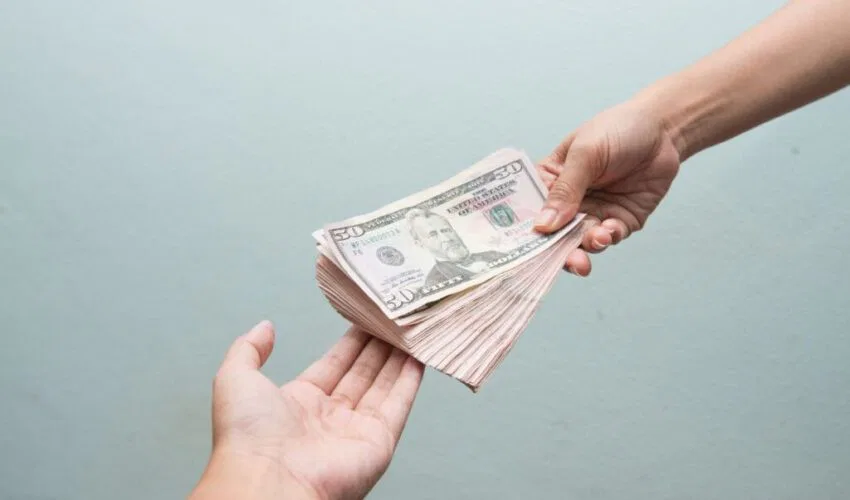Sending and Receiving Money From an Inmate in 2023

Published September 20, 2023
A lot of policies govern prisons. It should come as no surprise that an inmate’s finances are also regulated. Inmates are not allowed to hold money physically. Yet, they can have a trust fund account.
The inmate’s trust fund account is where they get and manage money to pay for prison necessities. It has its policies. For instance, they can only receive currency from certain people. All payments and withdrawals have to be approved by prison administrators.
If you have a loved one in jail, whether you can receive money from an inmate probably crossed your mind. And if you’re looking for an answer, keep on reading. We will dive into a comprehensive write-upwrite-up discussing how to receive money from an inmate. It will educate you on everything you need to know about it. Let’s begin.
Can You Receive Money From an Inmate?
Yes, it is possible to receive money from an inmate. The specific process and options for this matter will differ. Correctional facilities have different rules employed by the authorities.
Here are some standard methods for receiving money from an inmate:
1. Inmate Trust Accounts
Many prisons have trust accounts where inmates can deposit money. This money can be used for various purposes. For example, purchasing necessities from the commissary or making phone calls.
Inmates may let specific individuals for it. It is usually family members or friends. They’ll be the one to receive money on their behalf.
2. Electronic Transfers
Some correctional facilities call for electronic funds transfers to an inmate’s trust account. These transfers can be initiated via platforms. The most common are Western Union, JPay, and GTL.
3. Money Orders
Inmates may also receive money through postal money orders. Family members and friends can buy money orders. Upon sale, they will mail them to the correctional facility. The facility then credits the funds to the detainee’s account.
Receiving Money From an Inmate
When receiving money from an inmate, you must educate yourself.
Each correctional facility has its policies and procedures regarding it. It’s vital to familiarize yourself with the guidelines of the prison your inmate is destined for.
Generally, facilities accept all forms of payment for receiving money from inmates. These include cash, certified checks, money orders, or electronic transfers. You need to confirm the accepted formats of charge with the specific facility of your prisoner.
What Is Inmate Funds?
Inmate funds refer to the money in an inmate’s possession. These funds can come from various sources. Typically, they come from income or wages earned through prison work programs. Some of the money may come from family or friends. Others due to payment due to legal settlements. Lastly, from inheritances.
How to Send Money to Inmates?
It is also permitted to send money to inmates. Here are ways you can do so:
1. Electronic Transfers
Many correctional facilities offer electronic transfer services. The most common ones are via Western Union, JPay, or GTL. These services permit you to send money to the inmate’s account. You can do so online. You can also perform it via phone.
2. Postal Money Order
You can also send a postal money order by mail. The money order should be made payable to the inmate and include their identification number.
3. Inmates Trust Accounts
Prisons have trust funds for their detainees. Family members and friends follow specific procedures for them to deposit money.
4. Online Services
Certain facilities render online services for depositing money to an inmate’s account. For instance, Access Corrections yields online inmate deposits. It permits the secure sending of prison funds.
5. In-Person Deposits
Some facilities also employ on-site kiosks and cashiers. Here, you can make in-person deposits. The locations are typically at the correctional facility. For some, in certain authorized places.
Can an Inmate Send Money Home?
Most jails allow inmates to send money. They do so to family members at home. It’s their money, after all. They may not be able to hold it physically, but they can lead where it goes.
The inmate will have to put in a withdrawal request. In California prisons, inmates must fill out a Trust Account Form. It contains the prisoner’s ID number and housing information. Also, where to send the money, and why. They will then put it in a state envelope and drop it in mailboxes scattered around the facility.
Once approved, the inmate will receive a notice stating their trust account balance and transactions.
Can an Inmate Send Money to Another Inmate?
The rules vary per facility. In South Dakota, inmates are not allowed to send or receive money from other inmates. It is unless authorized by the warden. The same policy is also enforced in Washington prisons. In Indiana, it is not possible. In the state, inmates and prison staff are prohibited from doing financial transactions with other inmates. Anyone caught doing so may face disciplinary actions.
Some facilities are silent on the matter. But, in general, fund transfer between inmates is prohibited in state prisons and county jails.
Federal institutions, on the other hand, allow fund transfers between inmates provided that:
- they are from the same institution
- the inmates involved are close relatives
- the warden issues a written approval
- Inmates from different federal correctional facilities may also send funds to each other as long as the warden approves it in writing.

ADVERTISEMENT
The Inmate Banking System
As mentioned, financial transactions in prisons are heavily regulated.
Upon booking, all cash and other belongings of the inmate shall be confiscated and entered in a register. They are then assigned a non-interest-bearing trust fund account, which serves as their bank account while in prison. All income and earnings due to the inmate shall be credited to that account. This includes money from:
- Inmate Performance Pay
- UNICOR Pay (for federal inmates)
- Community Transition Program Earnings
- Deposits from outsiders
- Some facilities only allow deposits from close relatives or an inmate’s contact list. So before you send money to an inmate, check with the facility first if you qualify.
Prison administrators review all deposits and earnings before they are credited to the inmate’s account. Disapproved stakes are usually returned to the sender on the inmate’s expense.
The money in the inmate’s trust fund account shall be used to pay for expenses such as:
- commissary purchases
- payment of medical co-payment
- purchase of mail-order items from accredited vendors
- other purchases approved by the facility
- court-ordered child support
- court filing fees
- When an offender is transferred from one facility to another, the funds will be transferred to their new trust fund account. Any remaining funds on their account are also given to the inmate upon release.
In most facilities, the inmate’s trust fund account is separate from their phone account. Sending money to an inmate’s phone account might differ from sending money to the commissary.
How to Check Inmate Account Balance
To check an inmate’s account balance, the specific process varies. It will depend on the guidelines mandated by the correctional facility they belong to. Below are the most common methods:
1. Contact the facility
You can call the correctional facility and ask about the inmate’s account balance. You will have to give the necessary information about it. You should know the inmate’s name and identification number. The two will assist in locating the account.
Some facilities have online portals. You can log in and access information about the inmate’s account balance.
2. Inmate communication services
Another option for checking inmate’s account balances is via communication service providers. Most of them have features that permit checking via online or through their mobile app.
3. Inmate trust accounts statement.
In some cases, incarcerated individuals receive monthly or periodic statements of their account balances. If the inmate has them, you can request the most recent credit.
Frequently Asked Questions About Receiving Money From an Inmate?
1. How can I send money to an inmate in the US?
The most convenient way to send money to an inmate in the US is through electronic transfers. Many correctional facilities offer them through approved platforms. The most common is Western Union. You can visit the website, follow the prompts, and give the requested information.
2. What is an GettingOut app for inmates?
The GettingOut app is a communication platform. It is crafted to support incarcerated individuals to stay in touch with their loved ones. It provides a simple and reliable way for prison communication. It has messaging, audio, and video visitation.
3. What is the app that sends messages to inmates?
TextBehind, Securus eMassaging, and ConnectNetwork messaging are the top three apps for messaging inmates.
4. What is the best app to look up inmates?
MobilePatrol is one great application that connects you to critical safety information and news. It is also reliable for critical alerts. It partners with public safety and law enforcement agencies to give access to inmate information.
And now you’re guided on how receiving money from inmates works. It will come in handy if you require funds from them or if you’re helping them financially. If you liked what you read, consider sharing to help spread awareness.
Reduce Your Jail Call Costs By Up To 90% Per Minute With GlobalTel
GlobalTel’s inmate calling service lowers jail call per minute rates by up to 90% for jail calls from US facilities. Sign up now and use the special jail call phone number we create for you to eliminate the long distance jail call fees. Try GlobalTel for only $45.99 for 90 days. Make US/domestic and international jail calls at the local rate and stay connected to your incarcerated loved ones for less. Learn more about how to sign up for calls from inmates here.

This Content Is Fact Checked
Our esteemed team of specialists has thoroughly validated the accuracy of this information. Discover further details about the rigorous editorial guidelines for our website here.
ADVERTISEMENT

About The Author
I am Tracy Gorman, a seasoned writer with a passion for crafting content on various subjects. I possess the expertise to delve into any niche and deliver exceptional articles.




